Interest rates directly affect the prices of assets like bonds and currencies. These rates are set by the central bank and can alter market conditions a lot. By watching interest rate movements, investors can protect their investments better. By understanding the role of hedge funds in this area and analyzing market trends and data, investors can potentially profit from large-scale economic events and trends. It helps investors guess which way currencies, product prices, interest rates, and stock markets might go. This knowledge makes their large investment strategies more likely to succeed.
What Are the Risks of Macro Trading?
But macro traders can look at prior black swan events to get an idea of the potential fallout if another similar event were to occur. Macro investing is not concerned with the profit levels of an individual company. Rather, the macro investor looks at whether profits are rising, on average, within a country for most companies. They look at whether the economy in that country is doing well or poorly, and what the political situation is like or may become, in order to find potential trading opportunities. Macro trading strategies can add tremendous diversification to an equity investor due to uncorrelated returns. At the end of the article, we provide you with an example of a macro trading strategy that is backtested.
Its articles, interactive tools, and other content are provided to you for free, as self-help tools and for informational purposes only. Dumblittleman does not and cannot guarantee the accuracy or applicability of any information in regard to your individual circumstances. Examples are hypothetical, and we encourage you to seek personalized advice from qualified professionals regarding specific investment or financial issues. Our estimates are based on past market performance, and past performance is not a guarantee of future performance. The other options contain a mix of correct and false news that can lead to terrible losses for investors.
By understanding the complex interactions between these factors, macro traders aim to profit from shifts in the global economy. Macro trading is a sophisticated strategy javascript candlestick chart that requires a deep understanding of global economic conditions, political events, and market psychology. Successful macro traders are adept at identifying key macroeconomic trends and making well-timed predictions about their impact on global financial markets.
Macro trading is a way of investing that uses global economic and political trends to predict the direction of the markets and make profitable investments. By understanding the big picture of the global economy, investors can identify opportunities to trade in different markets, such as stocks, bonds, currencies, commodities, and derivatives. Stock or equity index trading under a global macro strategy analyzes the equity or commodity index of a specific country using futures, options, and exchange-traded funds (ETFs).
Euro Stoxx 50 Trading Strategy Backtest
Macro trading involves making trading or investment decisions based trading systems on the analysis of macroeconomic trends and global events. Traders consider economic, geopolitical, and emerging factors to identify opportunities across various asset classes. One of the main benefits of macro trading is that it allows investors to take advantage of opportunities that may be overlooked by other investors. For example, macro traders can identify and capitalize on changes in macroeconomic trends before they become widely known. Additionally, macro traders can benefit from taking positions in markets that may be temporarily mispriced due to short-term market volatility.
Types of Macro Trading Strategies
We believe everyone should be able to make financial decisions with confidence. Every share has an intrinsic value based on its true level of profitability and risk. Although it is impossible to determine the precise intrinsic fxdd review value, experts can use the available research resources to adjudge the intrinsic value of an asset. The backtest above is just one example of what we do in our weekly strategy report (including code).
These predictions are based on the interpretation of data points, such as asset prices and the S&P 500 index. Hedge fund managers may also use technical analysis or other quantitative methods to make predictions about future market behavior. However, quantitative traders require significant resources for data analysis. It’s important to do your research before investing in any fund and understand its risk profile.
- It helps investors guess which way currencies, product prices, interest rates, and stock markets might go.
- Analysing indicators like GDP growth, inflation rates, and employment figures provides insights into the country’s economic health and future trends.
- Additionally, macro traders can benefit from taking positions in markets that may be temporarily mispriced due to short-term market volatility.
- Macro trading involves analyzing global economic and political events to make investment decisions.
- They look at whether the economy in that country is doing well or poorly, and what the political situation is like or may become, in order to find potential trading opportunities.
- Traders look at GDP changes to make better trading choices and manage risks well.
What books are there on macro trading?
Macro trading and investment strategies are methods to profit from big market patterns and predictions. Investors look at world economic signs, big political events, and how different investments relate to each other. These traders have developed unique strategies that involve analyzing various economic indicators such as interest rates, inflation rates, and currency exchange rates.
Hedging involves taking a position that is opposite to an existing position, in order to reduce risk. Macro trading and investment strategies are an advanced way to navigate financial markets. To do this, they study global economic cues, world events, and how different types of assets link together. Macro trading refers to broad-view trading where the investors base their decisions on global aspects, policies, and politics.
Q: Are there any risks associated with macro trading?
Higher interest rates and decreasing money supply mean less buying and lower asset prices, generally. The next thing people need to understand when learning how to trade macro are interest rates. The more you start analyzing the biggest bond markets in the world — U.S., Japan and Europe — the more you’ll see how they all intersect one another. Trading macroeconomic and economic events is a lot like figuring out how to put together a 3D puzzle on how global markets interact and are correlated. Ultimately, the choice between macro and micro investing depends on an investor’s goals, risk tolerance, and preferred investment style.
Exploring the World of Macro Trading: What is Macro Trading and How Does It Work?
- Sign up for a free trial today and discover the difference that our innovative platform can make in your trading journey.
- Additionally, global macro ETFs are managed by professional teams with extensive knowledge of global macroeconomic trends and investment strategies.
- Hedging involves taking offsetting positions in different markets or assets to protect against adverse movements.
- These changes can, in turn, affect market prices, currency exchange rates, and interest rates, presenting opportunities for global macro traders to profit from.
- Macro traders use a variety of instruments to bet on the direction of macroeconomic factors, such as currencies, commodities, stocks, bonds, or derivatives.
- Macro traders often diversify their portfolios across different asset classes (currencies, commodities, bonds, equities) to reduce exposure to any single market or event.
A foreign exchange trader usually trades on a micro-scale; due to the wide variety of currency pairs available, an individual pair is safe from institutional control, and it is viable to analyze it on a micro level. It creates an excellent opportunity for traders to make profits by buying shares. However, if negative news arises, experienced traders would have to short the relevant asset class to attain positive results. However, almost all macro traders use some kind of quantified trading rules based on backtesting. These are factors that determine the state of a nation’s or region’s economy and, by extension, how the markets (equity, commodity, interest rate, bond, and currency) would perform. Macro-level analysis also considers the effects of other factors like economic crises, pandemics, and natural disasters, such as tornadoes, hurricanes, and earthquakes.
Macro traders analyze macroeconomic data, such as GDP growth, inflation, unemployment rates, and central bank policies, to identify trends and predict market movements. They then use this information to take positions in various financial instruments, such as stocks, bonds, currencies, and commodities, that are expected to benefit from the anticipated economic shifts. Macro trading is a trading style that focuses on analyzing and capitalizing on global macroeconomic trends and events to make informed trading decisions. Macro traders study economic indicators, monetary policies, geopolitical conditions, and other macroeconomic variables to assess how they will impact financial markets.

